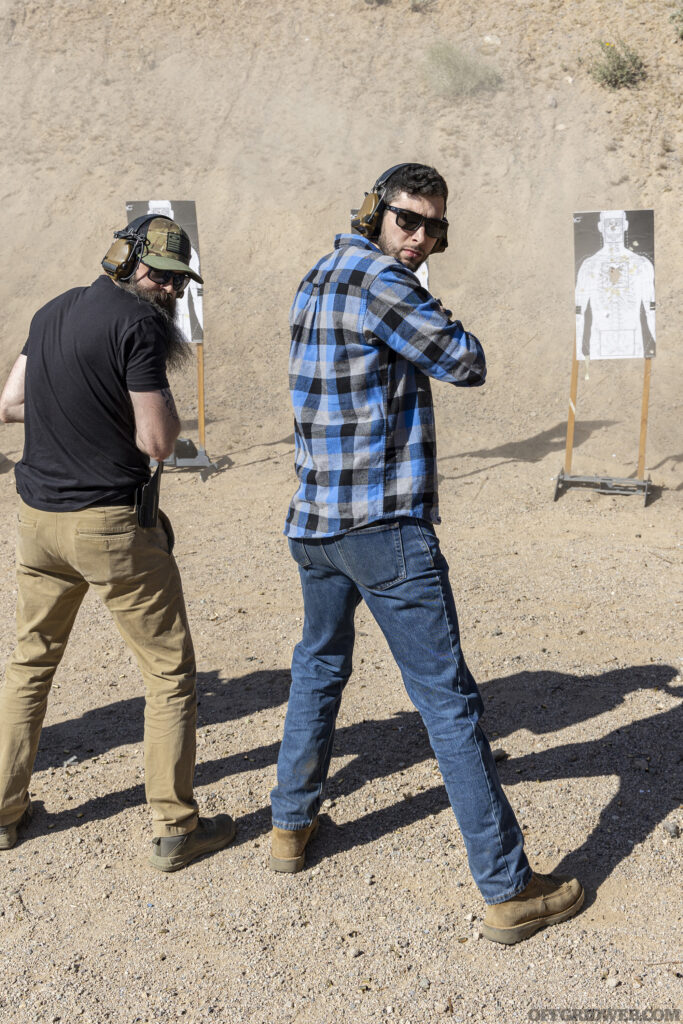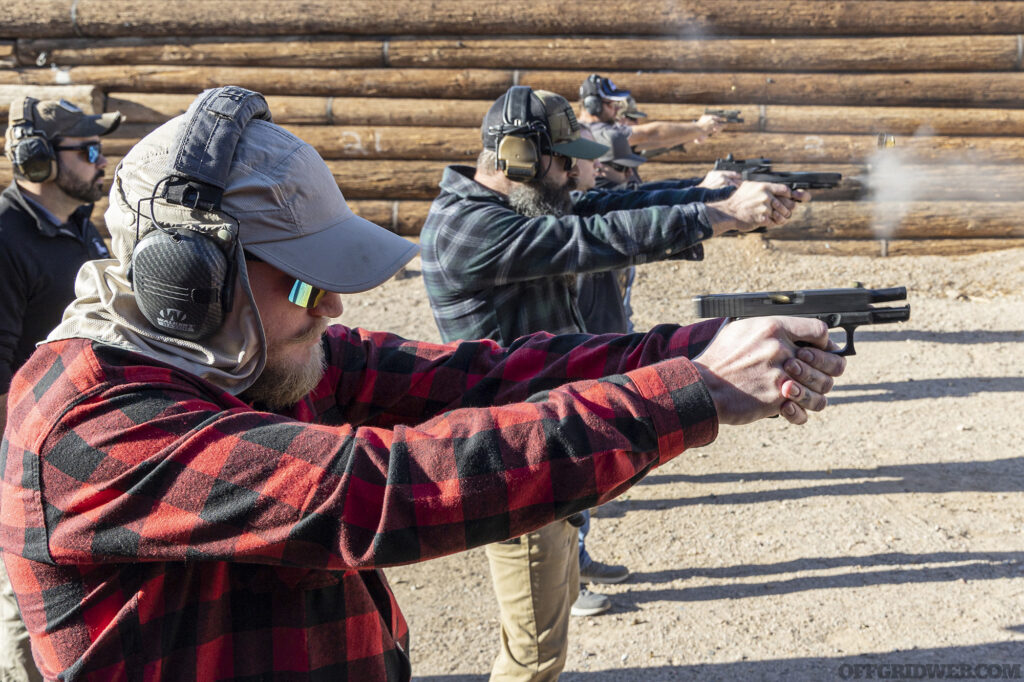Shooting and gunfighting are not the same thing — this is a statement we’ve made countless times in this column and elsewhere in our magazine, and it’s always worth reiterating. A strong grasp of technical shooting skills when exercising concealed carry rights, is essential if you expect to defend yourself with a firearm, but that alone doesn’t make you a gunfighter any more than owning a plane and knowing how to perform a basic takeoff makes you a fighter pilot.
Preparing for a gunfight involves maintaining situational awareness, developing a defensive mindset, a smooth and consistent draw, balancing speed and accuracy, footwork, transitioning between multiple targets, and the ability to manage stress. It may also involve skills that are rarely practiced in a typical “flat range” setting, such as one-handed shooting, shooting from retention, and clearing malfunctions.
Each of these important skills were addressed at a Core Pistol class I recently attended, taught by lead instructor Chris Vermeer of Core Dynamics Firearms Training.
The Core Pistol class began with a discussion of defensive mindset principles. In addition to reminders of Murphy’s law (if it can happen, it’ll happen) and the OODA loop (observe, orient, decide, act), Vermeer mentioned the less commonly known Hick’s law (the more choices you have, the longer it’ll take to make a decision).

Above: We were reminded that our ability to observe our surroundings before and after an incident can be just as important as our shooting skills.
From these three principles, students learned the importance of preparing for worst-case scenarios, continuously observing our surroundings, and “pre-gaming” situations mentally in order to streamline our heat-of-the-moment defensive decisions.
We were also reminded that violent criminals don’t think the same way we do; they may be desperate addicts, mentally unstable, or ruthlessly determined enough that the presence of a gun won’t phase them in the slightest. In those cases, lethal force may be the only way to stop an attack.
Stepping out onto the range, we practiced the classic five-step draw process from concealment: clear cover garment and establish a secure grip, draw the gun up out of the holster, rotate muzzle toward target, join with the support hand at sternum level, and finally extend to acquire the sights. Next, we worked from three ready positions: low ready (looking over the sights), temple index, and compressed.
Shooting drills started with slow and precise single shots to test our fundamentals, but quickly moved on to multi-shot strings with varying cadences based on target difficulty. We tested ourselves at distances from 5 to 25 yards, and even practiced no-shoot situations to simulate an opponent who surrendered before a shot was fired.
Malfunctions — which should be rare but are never impossible — were an important component of the class due to the aforementioned Murphy’s law. The classic tap-rack (smacking the magazine to ensure it’s seated, then racking the slide) is a technique Vermeer says most shooters don’t practice frequently enough. In order to make it a reflexive action, he recommended students integrate it into our daily dry-fire practice routine.

Above: Students drew from concealment, transitioned between multiple targets, and carefully balanced speed and accuracy.
As drills continued, students began sidestepping left or right while drawing, issuing verbal commands to the hypothetical assailant, and scanning a full 360-degree radius after firing. Obviously, we kept our weapons pointed downrange, but turned to look over each shoulder past the usual 180-degree “scan and assess” range.
To ensure the latter task wasn’t simply range theatrics, Vermeer quizzed us about what we observed once we had scanned our surroundings. In our final exercise, students paired up in front of two steel plates for a simulated fight. On the buzzer, each student quickly drew and shot the steel three times; whoever got three hits the fastest was the winner and advanced to the next round.
This induced stress, since each of us was aware of the consequences a fumbled draw or missed shots might have in a real gunfight.
I enjoyed my time at the Core Pistol class, and felt it was a nice refresher for critical skills related to self-defense with a concealed handgun. For more information on upcoming Core Dynamics pistol, carbine, and medical classes in Arizona, go to coredynamicsaz.com.
Read More
Subscribe to Recoil Offgrid's free newsletter for more content like this.
The post The Final Weapon: Core Concepts of Concealed Carry appeared first on RECOIL OFFGRID.
By: Patrick Diedrich
Title: The Final Weapon: Core Concepts of Concealed Carry
Sourced From: www.offgridweb.com/preparation/the-final-weapon-core-concepts-of-concealed-carry/
Published Date: Thu, 30 Nov 2023 12:00:22 +0000
------------------------
 What is BushcraftSurvival SkillsToolsVideosBushcraft CampsBushcraft KitsBushcraft ProjectsPrivacy PolicyTerms And Conditions
What is BushcraftSurvival SkillsToolsVideosBushcraft CampsBushcraft KitsBushcraft ProjectsPrivacy PolicyTerms And Conditions
